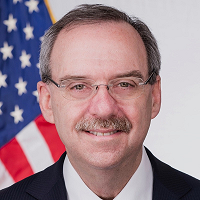 By Dr. Lee A. Fleisher, Chief Medical Officer and Director of the Center for Clinical Standards and Quality (CCSQ), CMS
By Dr. Lee A. Fleisher, Chief Medical Officer and Director of the Center for Clinical Standards and Quality (CCSQ), CMS
Twitter: @CMSGov
The Centers for Medicare & Medicaid Services (CMS) (@CMSGov) is committed to ensuring people on Medicare have quicker access to innovative medical technologies for life-threatening or irreversibly debilitating diseases – like cancer and heart disease.
In January 2021, we published a final rule called The Medicare Coverage of Innovative Technology and Definition of ‘Reasonable and Necessary’ (MCIT/R&N). The rule would have granted expedited Medicare coverage for up to four years for any U.S. Food & Drug Administration (FDA)-designated breakthrough device once the device received or cleared market authorization. This is assuming the device was not excluded from coverage by the Medicare statute.
CMS developed MCIT in part due to concerns that delays and uncertainty in Medicare coverage impaired beneficiary access to important new and innovative technologies, specifically those designated as breakthrough devices by FDA. However, many important considerations were raised through the public comment process, including concerns regarding lack of information as to whether the device would be beneficial or harmful to Medicare beneficiaries. This is important because Medicare patients have different clinical profiles and considerations due to the complexity of their medical conditions and concomitant treatments, compared to other groups.
The rule also presented operational challenges to CMS as we considered implementation. It would have guaranteed coverage of any device that received FDA breakthrough designation and market authorization without consideration as to whether the device is appropriate and provides benefits for the Medicare population. In other words, the rule did not require that the device demonstrate clinical benefits for people with Medicare—as well as concerns that the device might later be shown to pose greater risk of harm for those patients.
Seniors and people with disabilities who make up the Medicare population often have complex medical needs and unique health considerations compared to other patient populations. This can change the potential risks and benefits of a new device for Medicare patients, specifically.
CMS decided to repeal this rule and explore a new one. We believe it is important to evaluate how a device works for Medicare patients. This includes a potential decision to cover a device under Medicare in the context of collecting additional evidence (e.g. by requiring clinical trials or outcome registries) before broadly covering the device in the Medicare program.
Public comment on our proposal will be open from September 15 until October 15. If our proposal is finalized, we intend to conduct future rulemaking to explore an expedited coverage pathway that provides access to innovative beneficial technologies. As part of that rulemaking process, we intend to seek public comments on how the agency can create new coverage pathways or use existing ones to provide an appropriate balance of access to new technologies with necessary patient protections.
Medicare’s local contractors are empowered to offer coverage for items and services on a claim-by-claim basis – as long as such items and services meet the statutory requirements for coverage. Contractors use the best available evidence, and take an individual patient’s clinical condition under consideration when making these determinations. We recognize the claim-by-claim process can create a risk of noncoverage for providers and patients, as well as time lags and potential regional variation in local determinations. This is why we will continue to pursue additional policymaking avenues beyond local claim-by-claim determinations.
CMS values stakeholder input on these critical coverage decisions and will review the comments received on our proposal to repeal the MCIT/R&N final rule. We look forward to further engaging with stakeholders through townhalls or other engagements to build consensus wherever possible as we explore all options related to covering innovative technologies.
This article was originally published on the CMS Blog and is republished here with permission.
